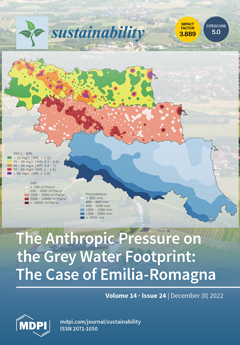The quality of experience (
QoE) of the individual user of telecommunication services is one of the most important criteria for choosing the service package of mobile providers. To evaluate the sustainability of
QoE, this paper uses indicators of user satisfaction
[...] Read more.
The quality of experience (
QoE) of the individual user of telecommunication services is one of the most important criteria for choosing the service package of mobile providers. To evaluate the sustainability of
QoE, this paper uses indicators of user satisfaction or dissatisfaction with the quality of network services (QoS), especially with conversational, streaming, interactive and background classes of traffic in networks. The importance of knowing the impact of selected combinations of paired legal–regulatory, technological–process, content-formatted and performative, contextual–relational and subjective user-influencing factors on
QoE sustainability is investigated using a multiple linear regression model created in Minitab statistical software, machine learning model based on boosted decision trees created in the MATLAB software package and predictive models created by using an automatic modeling method. The classification of influence factors and their matching for the analysis of interaction fields of users and services aim to mark
QoE as sustainable by determining the accuracy of the weight of subjective ratings of user satisfaction indicators as transitional variables in the predictive model of
QoE. The hypothetical setting is that the individual user’s curiosity, creativity, communication, personality, courage, confidence, charisma, competence, common sense and memory are adequate transition variables in a sustainable
QoE model. Using the applied methodology with an original research approach, data were collected on the evaluations of research variables from anonymous users of mobile operators in the geo-space of Republika Srpska and B&H. By treating the data with mathematical and machine learning models, the
QoE assessment was performed at the level of an individual user, and after that, several models were created for the prediction and classification of
QoEi. The results show that the relative error (RE) of the predictive models, created over the collected dataset, is insufficiently low, so the improvement of the prediction performance was achieved via data augmentation (DA). In this way, the relative prediction error is reduced to a value of RE = 0.247. The DA method was also applied for the creating a classification model, which at best demonstrated an accuracy of 94.048%.
Full article





